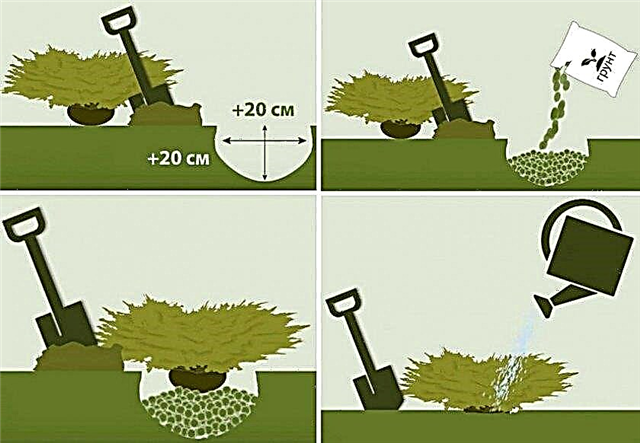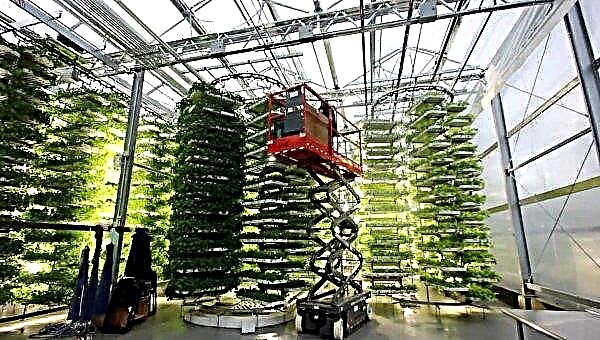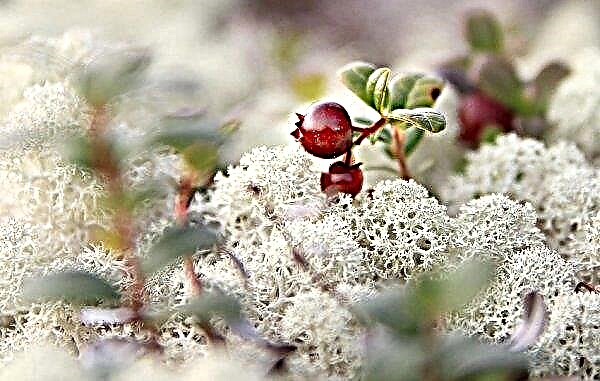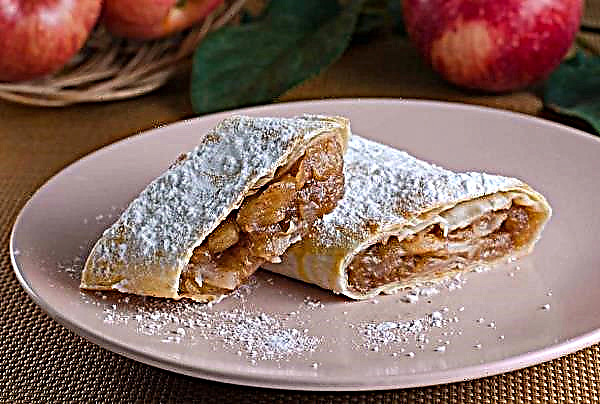Hydrangea is a beautiful ornamental plant often used in landscape design. Gardeners loved her because of their lush, large inflorescences, which, with some care, can change color. How to paint hydrangea flowers in blue at home, and also for what reasons inflorescences can independently change their shade, read on.
Why do inflorescences change color?
Before you make hydrangea inflorescences blue, it is necessary to understand why it is a given chemical process. A change in color scheme occurs due to the acidity of the soil and the presence of nutrients in it, such as aluminum and phosphorus.
Basically, they lend themselves well to color changes of the representative of the genus Hydrangea macrophylla. It is distinguished by large spherical inflorescences and large leafy plates.
Every gardener who wants to change the color of a given culture should take into account the fact that the white shade of flowers is difficult to change. Most often, pink inflorescences are changed to blue or vice versa, and the first option is easier to produce than the second.
Did you know? Hydrangea flowers symbolize heart affection. Therefore, they are often used in the preparation of wedding bouquets.
Soil acidity
Before planting the shrub in question, the acidity of the soil should be determined.
It is divided into 3 types:
- acidic - pH from 1 to 5;
- neutral - pH from 5 to 7.5;
- alkaline - pH from 7.5 to 14.

For the harmonious growth and color change of inflorescences to blue, the plant in question requires acidic soil. Therefore, before its landing, you need to determine the alkaline composition of the soil. The easiest way to calculate acidity is to use vinegar.
For the procedure you will need:
- tablespoon;
- glass surface (plate, flowerpot);
- vinegar 9%;
- land from the plot.
Important! Growing hydrangea on alkaline soils leads to fungal infections. Therefore, when choosing a site for planting, you should make sure that the soil has a pH of not higher than 7.5.
Instructions for determining acidity:
- Spoon the soil from the area where the flower will grow.
- Pour the soil into a glass container.
- Pour vinegar into the soil.
Next, you should observe the reaction that will occur when the ground and vinegar come in contact. If the soil begins to foam very much, then it is alkaline. A small amount of foam indicates a neutral pH. The complete lack of reaction means that the soil is acidic.

A more accurate method of determining pH will be with the use of litmus paper. For this, the gardener will need to purchase test strips in a specialized floriculture store, to which an acid scale is attached.
Then collect several land samples from the site and place them in cloth bags, which are subsequently placed in glasses with distilled water for 5 minutes. After this time, litmus paper is deepened in water and the result is evaluated on the scale attached to the test.
Video: soil ph test with litmus indicator strips
Aluminum
Large leaf hydrangea secretes the substance delphinidin-3-monoglycoside, which when reacted with aluminum leads to a change in the color of the inflorescences to blue. The plant accumulates this chemical element only with soil acidity from 1 to 5.5. If the pH of the soil is neutral or alkaline, then aluminum turns into a sparingly soluble element for shrubs.
Phosphorus
If a gardener wants to change the color of hydrangea to blue, he needs to ensure that there is no excess phosphorus in the soil. This element turns aluminum into a sparingly soluble substance, and it becomes unattainable for the plant. Therefore, if you want to change the shade of hydrangea inflorescences, it is necessary to observe a clear dosage of phosphorus fertilizer or, if possible, completely abandon it.
Did you know? Hydrangea in Japanese - “Adzisai”, in translation this name means “purple sunny flower”.
How to water to change the color to blue?
Every gardener should know that the snow-white flowers of this shrub are not subject to a change in color to blue or blue. You can change color only in pale pink or white-blue inflorescences. Therefore, when they say that it is necessary to change the white color to blue, they mean a change in light shades to a more saturated blue.
 In order for the hydrangea inflorescences to acquire such a color, it is necessary to go through several stages, which will be described later.
In order for the hydrangea inflorescences to acquire such a color, it is necessary to go through several stages, which will be described later.
Soil acidity is determined first, because so that hydrangea flowers turn blue, it is always necessary to maintain soil pH at a level not exceeding 5.5. For this, plants are watered with acidified water once every 2 weeks.
For irrigation, you can choose one of the methods of liquid oxidation (indicators are based on 10 l of water):
- sulfur 20 g;
- citric acid 30 g;
- vinegar 9% 100 ml.
Normal watering is done every 4 days. Under each plant make 20 liters of water. Gardeners can also use a folk remedy to change the color of hydrangeas to blue. To do this, water the plant with 1% potassium permanganate solution (100 g per 10 l of water). Irrigation is carried out every 10-14 days.
Important! To achieve a blue color in hydrangea, watering with acidified water must begin during the budding period and end after the leaves fall.
Color Fertilizer Application
An important factor for the harmonious development and color change of the crop in question is the receipt of fertilizers. To do this, every 14 days make feeding of 20 g of aluminum-potassium alum diluted in 20 liters of water. This fertilizer is enough for one adult plant.
Also, every month it is necessary to nourish the plant with potassium sulfate (30 g of substance per 20 liters of water). A solution prepared in this quantity is enough for one adult shrub.
 To maintain the optimum acidity of the soil and aluminum, it is necessary to carry out a mulching process once every 1–1.5 months, which not only nourishes the soil with useful substances, but also relieves the gardener of the need to remove weed grass near the trunk. Pine needles, acid peat, compost mixed with soil are taken as the material.
To maintain the optimum acidity of the soil and aluminum, it is necessary to carry out a mulching process once every 1–1.5 months, which not only nourishes the soil with useful substances, but also relieves the gardener of the need to remove weed grass near the trunk. Pine needles, acid peat, compost mixed with soil are taken as the material.
In the near-trunk circle, you can sprinkle 40 g of ground coffee or 20 g of aluminum sulfate per plant, and then pour it with 10 l of water.
Hydrangea is an amazing plant that can change the color of inflorescences. In order for the bush to bloom with a blue tint, and you can enjoy it, it is important to strictly adhere to the above rules.












